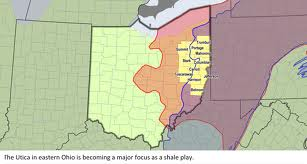 Gas Leasing Still Hot in Upper Ohio Valley
Gas Leasing Still Hot in Upper Ohio Valley
From Article By Casey Junkins, Wheeling Intelligencer, November 11, 2013
North, south, east and west, natural gas abstractors continue flooding courthouses throughout the Upper Ohio Valley in the effort to lock up land for Utica and Marcellus shale drilling.
A trip to the Belmont County Recorder’s Office last week found at least 25 abstractors inside the office, with some even working upstairs on the mezzanine level. Though hectic, the activity seems orderly.
The rush continues due to the impressive amounts of oil, natural gas and natural gas liquids that companies such as Chesapeake Energy, Chevron, Gulfport Energy, Antero Resources, Magnum Hunter, Hess Corp. and others are pumping throughout the area.
A common sight at Belmont County, Recorder Mary Catherine Nixon’s office these days, as natural gas abstractors crowd in to dig through property records to see who owns certain oil and gas rights.
Tim Carr, the Marshall Miller Professor of Energy at West Virginia University, estimated that one Barnesville area Gulfport well could have been producing about $100,000 worth of revenue per day earlier this year. Gulfport also has the “monster” – as labeled by energy investment firm Global Hunter Securities – Shugert well that yielded as much as 28.5 million cubic feet of gas per day deep within the Egypt Valley area near Morristown.
Some property owners have received at least as much as $6,000 per acre, with as much as 20 percent of the production royalties. Much of the high value for the gas underlying parts of Belmont County is that it contains wet ethane, propane, butane, pentane and oil – in addition to the dry methane gas.
Antero has signed the village of Barnesville to a drilling contract, along with many individual landowners in the community. The deals call for Antero to pay $5,700 per acre to lease the land and 20 percent of production royalties once the gas starts pumping. The company is also paying the Barnesville Exempted Village School District more than $400,000 in lease payments for the rights to extract gas from school property.
County Recorder Mary Catherine Nixon and her staff first started seeing an increase in activity about three years ago, a time when drillers were first considering Belmont County as a target for horizontal drilling and fracking. The traffic has increased during the interim period, largely due to positive drilling results.
In Monroe County, Carr said a single Utica Shale well drilled by Antero Resources could be producing as much as $300,000 worth of revenue per day.
“The well production will decline, but you are talking roughly $2 million per week in gross revenues,” said Carr. “If production holds up for even a short period of time, the well should pay out in two to three months.”
Gulfport’s Clay 3-4H well, just west of Piedmont Lake in Harrison County, is now in production. The well reached a peak daily production rate of 2.5 million cubic feet of natural gas, along with 392 barrels of condensate and 323 barrels of natural gas liquids, such as ethane, propane and butane.
On the West Virginia side of the Ohio River, abstractors are back at work in Ohio County, after they had left for a few months. In Tyler County, officials eventually had to limit access to County Clerk Theresa Hamilton’s office because there just was not enough room in the records vault. This had some abstractors waiting outside all night to secure their places in the records office for the next day, until officials came up with a more organized plan. (Just south of Tyler County, the Pleasants County courthouse is now active also.)

{ 1 comment… read it below or add one }
“Ohio’s EPA Extends Deadline for Companies to Disclose Fracking Chemicals”
The Ohio Environmental Protection Agency has given energy companies until Dec. 15 to report on hazardous materials that they use for hydraulic fracturing. The original deadline was Nov. 15, but the agency’s State Emergency Response Commission said energy companies needed more time to complete their reports. The requirement is in line with the federal Emergency Planning and Community Right-to-Know Act, which mandates energy firms to report on-site hazardous chemicals that exceed 10,000 pounds. The Marietta Times (Ohio) (11/2)